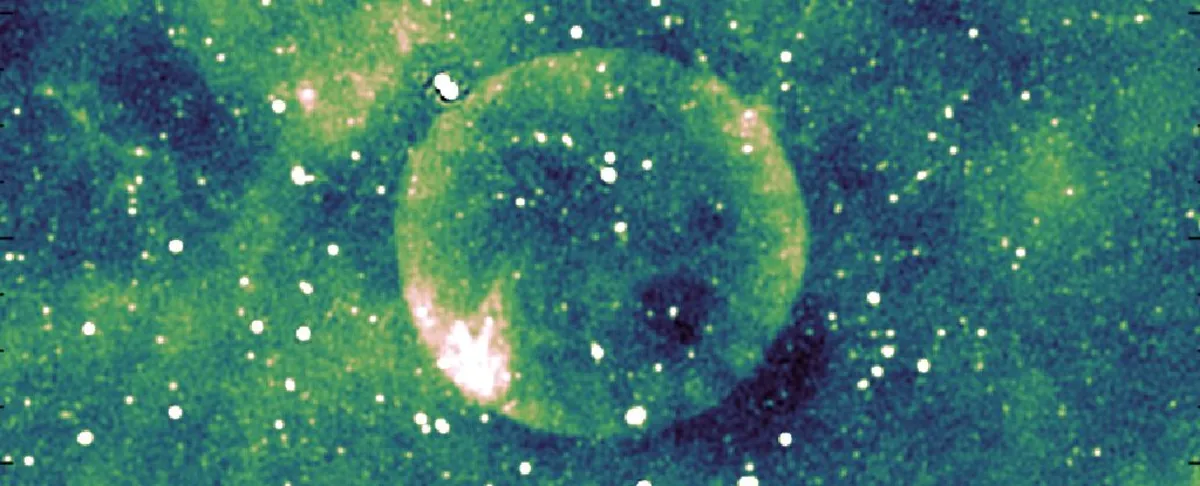
The Milky Way galaxy is known for its astonishing wonders, but a recent discovery has left astronomers scratching their heads. Utilizing data collected from the powerful Australian Square Kilometre Array Pathfinder (ASKAP) radio telescope, researchers have identified what appears to be a perfectly spherical bubble in space. While it is generally understood that this object is a supernova remnant—a ball of expanding material ejected by an exploding star—the precise formation process remains elusive.
A large international team led by astrophysicist Miroslav Filipović from Western Sydney University has aptly named this enigmatic object Teleios, which translates to "perfection" in ancient Greek. After an extensive review of various hypotheses, the researchers concluded that additional data is crucial for unraveling the origins of Teleios. Their findings have been submitted for publication in the Publications of the Astronomical Society of Australia and are accessible on the preprint server arXiv.
The ASKAP telescope has been pivotal in uncovering a treasure trove of peculiar astronomical phenomena, including a variety of peculiar circles in the sky, as part of its Evolutionary Map of the Universe (EMU) survey. Among these discoveries are the famous Odd Radio Circles (ORCS), which present a unique set of challenges for astronomers. Unlike the ORCS located at intergalactic distances, Teleios is situated within the Milky Way, but its exact distance remains uncertain, complicating the understanding of its origins.
Filipović and his colleagues conducted a meticulous analysis of Teleios, determining that it emits a faint glow exclusively in radio wavelengths. This characteristic suggests that it is likely the remnant of a Type Ia supernova—one of the brightest supernova types in the universe. These supernovae occur when a white dwarf star in a binary system accumulates enough material from its companion star to exceed its mass limit, leading to a catastrophic explosion.
However, determining distances in space is notoriously challenging. Researchers have estimated Teleios's distance to be either approximately 7,175 light-years or around 25,114 light-years. These two potential distances imply drastically different sizes for the bubble: if Teleios is closer, it would be about 46 light-years across; if farther away, it could measure up to 157 light-years across. Such variations in size would indicate vastly different evolutionary histories for this supernova remnant.
The implications of these distances are significant. A closer Teleios could mean it is a younger remnant, less than 1,000 years old, while the farther distance suggests an age exceeding 10,000 years. Complicating matters further, models of Type Ia supernovae typically predict the presence of X-rays; however, Teleios lacks detectable X-ray emissions, which presents a significant puzzle for astronomers.
Another possibility is that Teleios could be the remnant of a Type Iax supernova, a variant of Type Ia that does not completely destroy the white dwarf, leaving behind a "zombie" star remnant. This scenario aligns more closely with Teleios's emission properties but would require it to be much closer, around 3,262 light-years away, making it approximately 11 light-years in diameter. However, existing measurements do not support this closer distance, adding to the uncertainty surrounding Teleios.
One particularly intriguing aspect of Teleios is its near-perfect symmetry. Typically, supernova remnants exhibit asymmetry due to the nature of the explosion and surrounding interstellar conditions. However, if the explosion were symmetrical and occurred in a sparse region of space, it could expand uniformly, resulting in the bubble's unusual shape. While such symmetry is rare, it is not impossible, making Teleios a fascinating subject for further study.
To truly understand the origins and nature of Teleios, astronomers emphasize the need for more sensitive and high-resolution observations. "We have conducted an exhaustive exploration of the possible evolutionary state of the supernova based on its surface brightness, apparent size, and possible distances," the researchers note. Each potential scenario presents its own challenges, particularly given the unexpected lack of X-ray emissions. While the Type Ia supernova theory appears most plausible, definitive evidence is still required to confirm any of the proposed scenarios.
As we continue to explore the mysteries of the universe, Teleios stands out as a remarkable example of the complexities that await discovery within our own Milky Way galaxy.